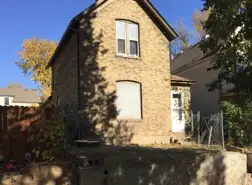What exactly is a carbon zero home? “A zero carbon home is one that generates as much power as it uses over the course of a year and therefore has net zero carbon dioxide emissions.”(1). Therefore, a carbon zero home uses renewable energy sources, such as solar PV, sized to produce a net amount of energy equal to the net amount of energy consumed.
How do you help a home become zero carbon, especially in a climate like Minnesota’s?
Sean McCoughlin, a master remodeler with extensive experience remodeling older homes in Minnesota says, “In terms of energy-efficiency, the Twin Cities is New York, New York. If you can make it here, you can make it anywhere.” (2). Reducing a home’s consumption in a climate as harsh as Minnesota can be tough.
Part of Sean’s work is advocating for a holistic vs. an incremental approach to energy efficiency improvements. Some remodelers and builders say a homeowner should boost attic insulation, add spray foam and install a new (HE) furnace, and call it good. But that can lead to issues like “mold growth, trapping radon or creating rot, which shorten’s a home’s lifespan” (3) and can also cause health issues.
Minneapolis put forth a Climate Action Plan, which called for a 15% reduction in emissions by 2015. However, that was achieved already in 2012. The next steps are to be 30% by 2030, and 80% or more by 2015. So, how do we achieve those goals?
We have to start building differently. A passive house, for example, does not need a furnace. “Houses built more than 70 years ago often use 4 times the amount of energy for heating and cooling than new homes under existing code.” (4) The potential for us to improve from here is enormous.
Older homes generate the highest emissions, though they are also the trickiest to transform. We already have the technology we need for smarter design. First, we must reduce building loads and then incorporate renewables. The biggest challenge, then, is how to implement these technologies in the most cost-effective manner. To do so takes knowledge, careful planning and intentional design.

The Carbon Zero Home Mission is to address the problem of Climate Change, and especially its social justice implications in Minneapolis. “By completing successive renovations throughout Minneapolis, we plan to find the least expensive model for taking older homes to zero carbon.” (5)
Click here to read an in-depth explanation of designing for carbon zero, including allowing for emissions reductions through lifestyle, creating thermal efficiencies and incorporating smart-grid technologies and renewables: http://www.yourhome.gov.au/housing/carbon-zero-carbon-positive


